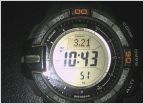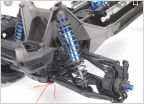-
Welcome to Tacoma World!
You are currently viewing as a guest! To get full-access, you need to register for a FREE account.
As a registered member, you’ll be able to:- Participate in all Tacoma discussion topics
- Communicate privately with other Tacoma owners from around the world
- Post your own photos in our Members Gallery
- Access all special features of the site
Our Position in the Universe
Discussion in 'Off-Topic Discussion' started by North Star, Sep 3, 2014.
Page 4 of 6
Page 4 of 6


 No I am not your uber driver. GTFO of my truck
No I am not your uber driver. GTFO of my truck Adding a capacitor to a fuse for initial loading?
Adding a capacitor to a fuse for initial loading? Buying new computer, suggestions please?
Buying new computer, suggestions please? Outdoor Watch
Outdoor Watch Spiders HATE peppermint
Spiders HATE peppermint I need 4.15mm steel pins - where can I buy them?
I need 4.15mm steel pins - where can I buy them?














































































